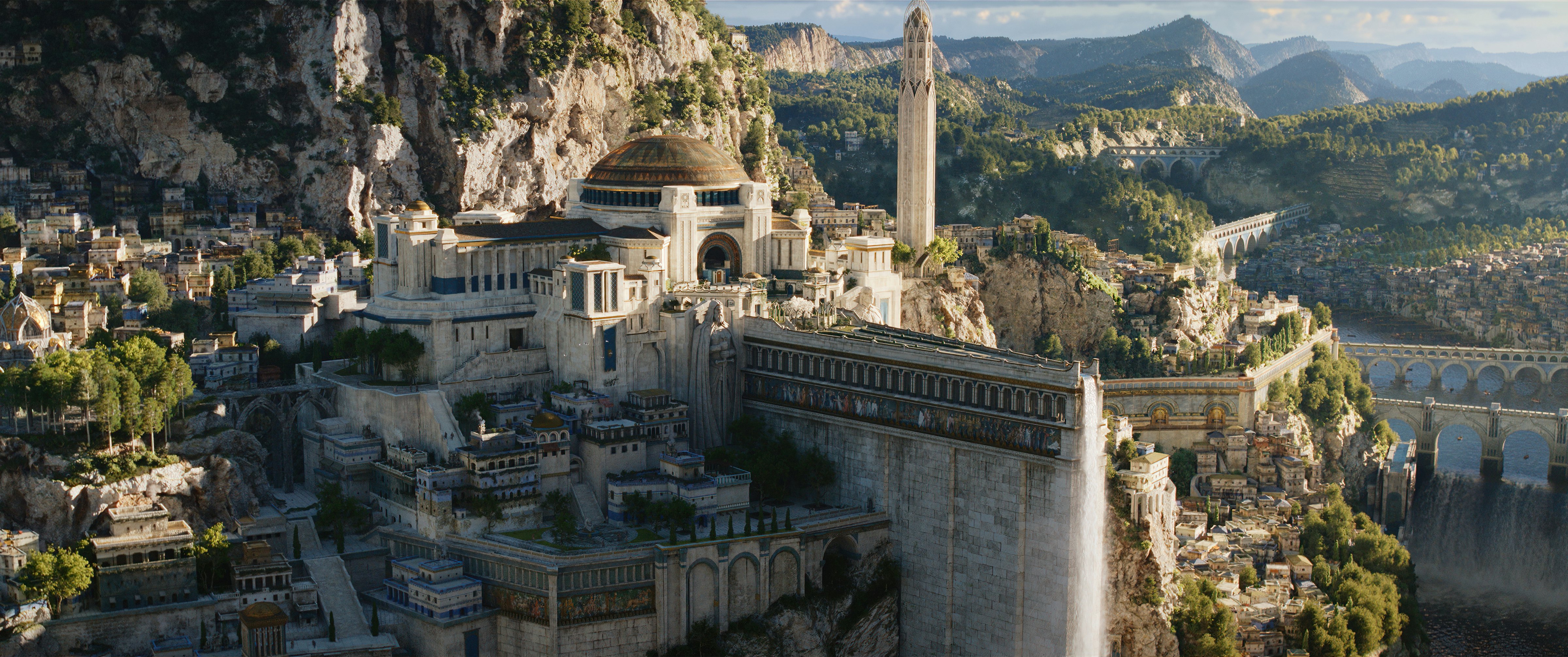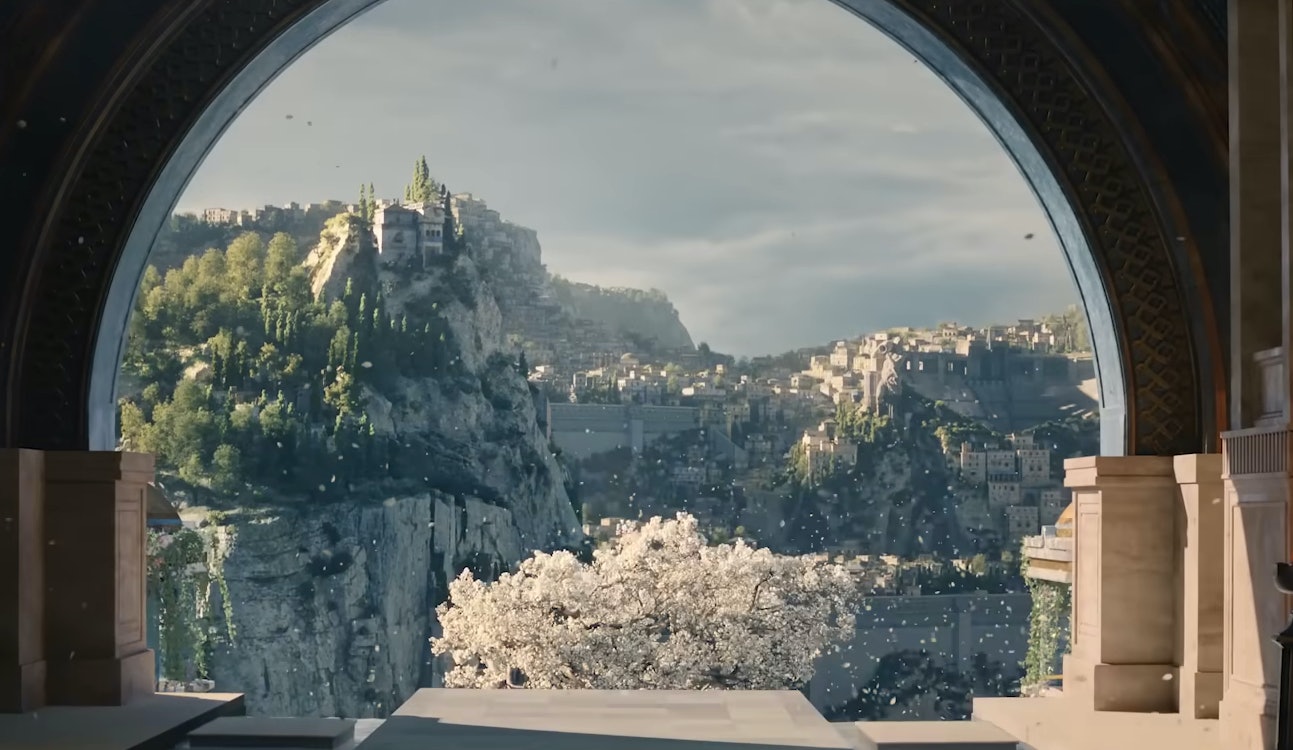
The latest installment of Amazon’s The Lord of the Rings: The Rings of Power finally takes time to explore the island kingdom of Númenor, a legendary Second Age location that has never been brought to life on-screen before.
The show’s belated introduction of Númenor doesn’t disappoint. Not only is the island kingdom setting expansive, well-realized, and realistically complex in The Rings of Power Episode 3, but it also feels different from any other location we’ve seen in Middle-earth before.
Númenor has a clear and identifiable culture in The Rings of Power, one that is reflected in the kingdom’s architecture and landmarks — including a White Tree that will probably look very familiar to fans of Peter Jackson’s Lord of the Rings films.
The White Tree in Lord of the Rings

During its exploration of Númenor, The Rings of Power briefly shows the White Tree that sits within the kingdom’s capital city. The tree, which is known as Nimloth, bears a striking resemblance to the one that stands in Minas Tirith in The Lord of the Rings: The Return of the King.
For that reason, it’d be understandable if some Lord of the Rings fans were left wondering whether Nimloth one day becomes the White Tree of Gondor.
Unfortunately, Nimloth is not actually the same White Tree that stands in Gondor during the Third Age of Middle-earth. However, that doesn’t mean the tree seen in The Rings of Power Episode 3 isn’t connected to the one that will one day serve as the symbol of Gondor.
The History of Nimloth

As Galadriel (Morfydd Clark) notes early in The Rings of Power’s third installment, the Númenóreans originally had a strong and positive relationship with the Elves of Middle-earth. In fact, the bond between the Elves and the Númenóreans was so strong that the Elves gifted the island kingdom of Men with a seedling from a White Tree that had been planted on an island located off the coast of the Undying Lands.
The seedling grew into the White Tree known as Nimloth. Without spoiling anything, it’s worth noting that a fruit from Nimloth will one day grow into a seedling that will be carried to Middle-earth by a well-known hero. That seedling will, in turn, grow into a White Tree in Minas Ithil, which will produce the seedling for the White Tree of Gondor.
In other words, while Nimloth is not the White Tree of Gondor, the latter does come from the same line as the Númenórean tree.

The Inverse Analysis — Nimloth’s connection to the White Tree of Gondor makes it one of Númenor’s most important landmarks. Its importance doesn’t begin and end there, though. As Míriel (Cynthia Addai-Robinson) notes in The Rings of Power Episode 3, the White Tree is seen as an almost holy symbol among certain Númenórean factions.
Because of this, Nimloth will one day become a major point of contention between the Númenóreans who wish to return the kingdom to its Elf-friendly roots and those who wish to leave both the Elves and the Valar behind. In other words, Rings of Power viewers shouldn’t be surprised if the state of the White Tree of Númenor is used as a symbol of the state of the island kingdom throughout the series.
Much like the White Tree of Gondor, Nimloth is a whole lot more important to Númenor itself than even its eye-catching appearance suggests.
New episodes of The Rings of Power premiere Fridays on Amazon Prime.







